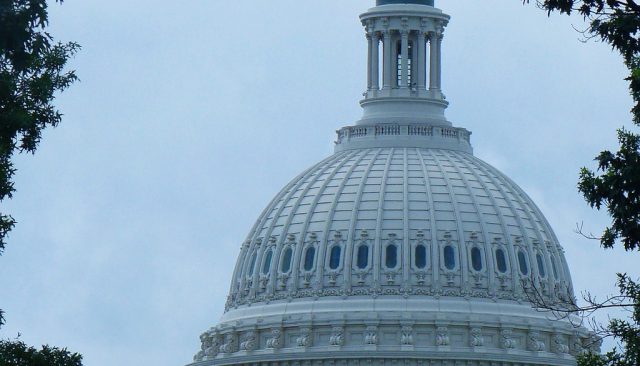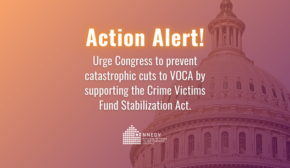Congress Invests in Lifesaving Program for Victims
May 3, 2017
The National Network to End Domestic Violence (NNEDV) praises the vital bipartisan commitment of Congress to supporting and serving victims of domestic violence and sexual assault. The appropriations package to complete the remainder of fiscal year 2017 (FY 17) commits investments to critical programs serving victims of crime, including Violence Against Women Act (VAWA) programs and the Family Violence Prevention and Services Act (FVPSA).
The budget includes several needed increases. Specifically:
- $2 million increase for the Improving Criminal Justice Responses to Sexual Assault, Domestic Violence, Dating Violence, and Stalking Grant Program of VAWA, which encourages state, local, and tribal governments and courts to treat these crimes as serious violations of law requiring a coordinated response from the entire criminal justice system;
- $1 million increase for VAWA Rural grants, which support services for victims of domestic violence and sexual assault living in rural and isolated areas;
- $1.5 million increase to implement tribal jurisdiction over crimes committed on tribal land, encouraging coordinated involvement of the entire tribal criminal justice system, as well as victim service providers, to ensure accountability;
- $1 million increase for FVPSA, supporting life-saving services, including emergency shelters, crisis hotlines, counseling, and programs for underserved communities, throughout the United States and territories.
While the budget includes increased investments in many key areas, it does not maintain the increase in Victims of Crime Act (VOCA) funds, and cuts some key programs such as the work of the National Institute of Justice and the implementation of the Rape Survivor Child Custody Act.
NNEDV is grateful for this incredible bipartisan effort; however, we remain concerned about the precedent that may be set by transferring investments from the VOCA fund (which is a non-taxpayer fund designated for services to victims of crime) to fund VAWA programs that otherwise would have been funded by the Department of Justice.
As the FY 17 budget nears completion, the importance of funding for these programs in FY 18 continues to grow. Today, NNEDV delivered a letter to Congress, signed by 977 organizations from across the country, to urge Congress to increase funding for Violence Against Women Act (VAWA), the Family Violence Prevention and Services Act (FVPSA), the Victims of Crime Act (VOCA), and related programs that address domestic violence, sexual assault, dating violence, and stalking, and to reject cuts to these critical programs.
“We are proud to stand with organizations around the country to advocate on behalf of victims of domestic violence and sexual assault,” said Kim Gandy, NNEDV President and CEO.
Recent modest increases in funding for VAWA and FVPSA, along with sustained funding released from VOCA, are beginning to address a portion of the persistent gap in direct services. Our nation’s progress in understanding and addressing sexual and domestic violence is a result of our national, ongoing, annual investment. VAWA saved an estimated $12.6 billion in net-averted costs in its first six years alone [1]. Through our nation’s combined investments in VAWA, VOCA, and FVPSA, the reporting of domestic violence has increased [2], and the rate of non-fatal domestic and dating violence against women has decreased by 63 percent [3].
—
[1] Kathryn Andersen Clark et al., A Cost-Benefit Analysis of the Violence Against Women Act of 1994, 8 Violence Against Women 417 (2002).
[2] Intimate Partner Violence in the U.S. U.S. Department of Justice, Office of Justice Programs, Bureau of Justice Statistics, Jan. 2008.
[3] Truman, J.L. & Morgan, R.E. (2014, April.) Nonfatal Domestic Violence (2003-2012). U.S. Department of Justice, Office of Justice Programs: Bureaus of Justice Statistics, available at https://www.bjs.gov/content/pub/pdf/ipvav9311.pdf (see page 3).





